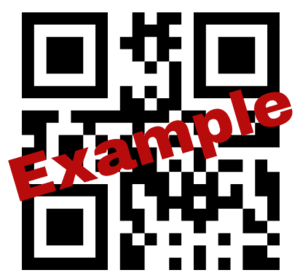Crews working to install, maintain and repair assets and infrastructure in the field can face a variety of hazards every day. To ensure Workplace Health and Safety (WH&S) tools function seamlessly and efficiently within work execution processes of a major Australian utility company, COSOL collaborated with the clients to improve the onsite risk assessment processes using EZMaxMobile. In this article we summarise the problems identified by the client and the solution that meet their needs.
At a glance
- COSOL recently delivered an innovative customisation of EZMaxMobile to enhance the WH&S outcomes for a major utility company.
- A solution was developed in collaboration with the utility company who identified duplication of effort as one of the major pain points.
- The solution delivered saw the previously pre-start risk assessment removed and replaced with a single general risk assessment that prompts subsequent high-risk assessment.
- The collaborative work has brought about usability improvements in the user interface including new alert system.
Assessing work hazards
Risk management plays a vital role in helping field workers think safe, work safe and return safely to their families at the end of each day. Conducted to prevent workplace incidents and injuries from occurring, effective risk management involves:
- Hazard Identification – Identifying what could cause harm to workers
- Risk Assessment – Assessing how likely the hazard is to cause harm
- Control – Applying controls to eliminate or reduce the risk to workers
Some organisations achieve this with a collection of pre-configured risk assessments based on the tasks (eg welding), equipment (eg ladder) or consumables (eg toxic substances) required to complete a work order. The location at which work is to be performed contributes significantly to the risk profile (alongside active train tracks for example), and so risk assessments are typically presented in a checklist-style format to crews when they arrive on site to commence work.
Duplication, multiple systems and cumbersome steps to implement and document controls can all contribute to making the process frustrating and time-consuming for the staff involved which may ultimately compromise the risk management objective.
Single mobile tool
With conditions on the work site such a vital factor in assessing risk, a mobile solution to support field crews in documenting risks and implementing controls is essential.
EZMaxMobile is a mobility tool designed specifically for Maximo. It integrates seamlessly, allowing field users full access to asset data and functions in online and offline modes without having to duplicate or compromise business rules. We've helped utilities, civil infrastructure, transportation and local government go mobile to empower field crews and realise efficiencies in common asset management tasks, including:
- Perform site and asset inspections and record condition information.
- View job tasks and safety plans anywhere.
- Access safety policy and procedures within the context of the current site and active work order.
Streamlining mobile risk assessment
COSOL recently participated in a collaborative improvement project between one of our EZMaxMobile customers who had identified a number of challenges in the risk assessment process:
- A compulsory pre-start assessment identified hazards but did not offer or require control selections - this devolved the assessment into a "tick and flick" exercise - diminishing the value and purpose of the assessment.
- Duplication between different types of mandatory assessments was eating into tool-time on the job.
- Team members were uncertain of when and where to sign on to risk assessments.
- The process to identify risks, controls, and the documentation to implement controls was cumbersome and required team members to work out of multiple systems.
A working group brought COSOL together with both field and office-based staff to review the risk assessment process, including the number and content of assessment checklists, integration with works management (ie where multiple work orders are assigned for a single site), and reporting mechanisms. Duplication was one of the biggest pain points, which was reduced significantly with logic that revealed additional checklist items based on responses to previous questions. For example, selecting a ladder in an equipment list triggers the working at heights assessment.
The previous generic pre-start risk assessment was removed in favor of a single general risk assessment (to reduce duplication of effort) that works alongside the existing high-risk assessment checklist. Other enhancements implemented as a result of this project included:
- Linking high-risk activities with the relevant documentation (eg procedures and checklists).
- Displaying alerts for missing hazards or controls on both types of risk assessments
- User interface changes to improve usability including:
- A consistent "look and feel" for both types of risk assessments
- High-risk assessment summary on the summary page to show what's selected using relevant icons
- Enhanced and consistent wording, hazard controls and structure for both types of assessments
- Colour changes to make selected hazards more visible.
This collaboration has helped streamline the risk assessment process for this utilities field teams, removing duplication and frustration with the process.
Learn more about EZMaxMobile and Mobility
EZMaxMobile puts the power of Maximo in the hands of mobile work crews.


